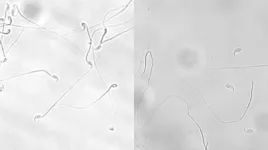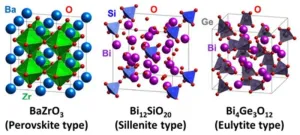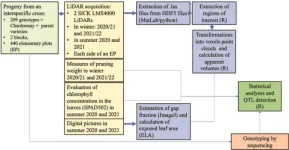· New finding to understand brain cell loss in neurodegenerative disease
· Increasing protective short RNAs may be new approach to halt or delay Alzheimer’s
· SuperAgers with superior memories have more protective short RNAs in their brains
CHICAGO --- Alzheimer’s disease, which is expected to have affected about 6.7 million patients in the U.S. in 2023, results in a substantial loss of brain cells. But the events that cause neuron death are poorly understood.
A new Northwestern Medicine study shows that RNA interference may play a key role in Alzheimer’s. For the first time, scientists have identified short strands of toxic RNAs that contribute to brain cell death and DNA damage in Alzheimer’s and aged brains. Short strands of protective RNAs are decreased during aging, the scientists report, which may allow Alzheimer’s to develop.
The study also found that older individuals with a superior memory capacity (known as SuperAgers) have higher amounts of protective short RNA strands in their brain cells. SuperAgers are individuals aged 80 and older with a memory capacity of individuals 20 to 30 years younger.
“Nobody has ever connected the activities of RNAs to Alzheimer’s,” said corresponding study author Marcus Peter, the Tom D. Spies Professor of Cancer Metabolism at Northwestern University Feinberg School of Medicine. “We found that in aging brain cells, the balance between toxic and protective sRNAs shifts toward toxic ones.”
The paper will be published Jan.18 in Nature Communications.
Relevance beyond Alzheimer’s disease
The Northwestern discovery may have relevance beyond Alzheimer’s. “Our data provide a new explanation for why, in almost all neurodegenerative diseases, affected individuals have decades of symptom free life and then the disease starts to set in gradually as cells lose their protection with age,” Peter said.
New avenue for treatment
The findings also point to a new way for treating Alzheimer’s and potentially other neurodegenerative diseases.
Alzheimer’s is characterized by a progressive occurrence of amyloid-beta plaques, tau neurofibrillary tangles, scarring and ultimate brain cell death.
“The overwhelming investment in Alzheimer’s drug discovery has been focused on two mechanisms: reducing amyloid plaque load in the brain — which is the hallmark of Alzheimer’s diagnosis and 70 to 80% of the effort — and preventing tau phosphorylation or tangles,” Peter said. “However, treatments aimed at reducing amyloid plaques have not yet resulted in an effective treatment that is well tolerated.
“Our data support the idea that stabilizing or increasing the amount of protective short RNAs in the brain could be an entirely new approach to halt or delay Alzheimer’s or neurodegeneration in general.”
Such drugs exist, Peter said, but they would need to be tested in animal models and improved.
The next step in Peter's research is to determine in different animal and cellular models (as well as in brains from Alzheimer’s patients) the exact contribution of toxic sRNAs to the cell death seen in the disease and screen for better compounds that would selectively increase the level of protective sRNAs or block the action of the toxic ones.
What are toxic and protective short RNAs?
All our gene information is stored in form of DNA in the nucleus of every cell. To turn this gene information into the building blocks of life, DNA needs to be converted into RNA which is used by cell machinery to produce proteins. RNA is essential for most biological functions.
In addition to these long coding RNAs, there are large numbers of short RNAs (sRNAs), which do not code for proteins. They have other critical functions in the cell. One class of such sRNAs suppresses long coding RNAs through a process called RNA interference that results in the silencing of the proteins that the long RNAs code for.
Peter and colleagues have now identified very short sequences present in some of these sRNAs that when present can kill cells by blocking production of proteins required for cells to survive resulting in cell death. Their data suggest that these toxic sRNAs are involved in the death of neurons which contributes to the development of Alzheimer’s disease.
The toxic sRNAs are normally inhibited by protective sRNAs. One type of sRNA is called microRNAs. While microRNAs play multiple important regulatory roles in cells, they are also the main species of protective sRNAs. They are the equivalent of guards that prevent the toxic sRNAs from entering the cellular machinery that executes RNA interference. But the guards’ numbers decrease with aging, thus allowing the toxic sRNAs to damage the cells.
Key findings
· The amount of protective sRNAs is reduced in the aging brain.
· Adding back protective miRNAs partially protects brain cells engineered to produce less protective sRNAs from cell death induced by amyloid beta fragments (which trigger Alzheimer’s).
· Enhancing the activity of the protein that increases the amount of protective microRNAs partially inhibits cell death of brain cells induced by amyloid beta fragments and completely blocks DNA damage (also seen in Alzheimer’s patients.)
How the study worked:
Scientists analyzed the brains of Alzheimer's disease mouse models, the brains of young and old mice, induced pluripotent stem cell-derived neurons from normal individuals (both young and aged) and from Alzheimer's patients, the brains of a group of older individuals over 80 with memory capacity equivalent to individuals 50 to 60 years old, and multiple human brain-derived neuron-like cell lines treated with amyloid beta fragments, a trigger of Alzheimer’s.
Northwestern co-authors on the study include first author Bidur Paudel, Si-Yeon Jeong, Ashley Haluck-Kangas, Elizabeth T. Bartom, Kristina Fredriksen, Amira Affaneh, John A. Kessler, Joseph R. Mazzulli, Andrea E. Murmann, Emily Rogalski (formerly of Northwestern), Changiz Geula, Adriana Ferreira, Katherine R. Sadleir and Robert Vassar.
This work was supported by National Institutes of Health grants R35CA197450, R35CA231620, R01NS090993, R01AG030142, R01AG045571, R56AG045571, R01AG067781, U19AG073153, P30AG072977, P30AG13854 and R01NS124783 and L40CA231423.
END







